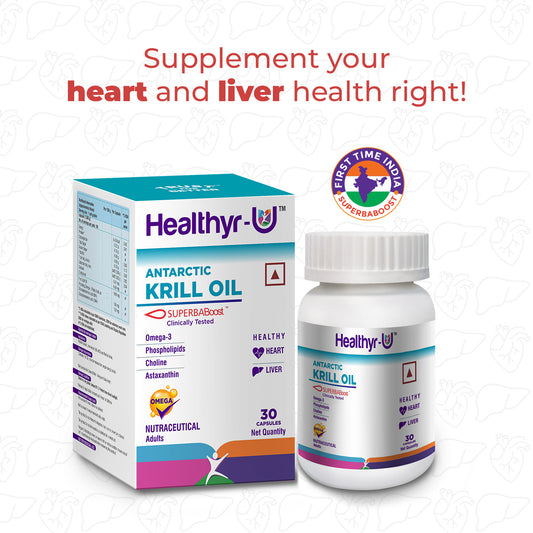In recent years, there has been growing concern about the impact of diet on our health and well-being. One particular nutrient that has gained significant attention is Omega-3 fatty acids. Known for their numerous benefits, Omega-3s are essential for our body's optimal functioning. However, when it comes to the Indian diet, which is rich in spices and flavours, how well do we incorporate Omega-3s? This blog post will explore the Indian diet and its relationship with Omega-3s and discuss strategies to achieve a balance.
Understanding Omega-3 Fatty Acids
Omega-3 fatty acids are polyunsaturated fat that our body cannot produce alone. They are crucial for brain health, heart health, reducing inflammation, and supporting overall well-being. There are three main types of Omega-3s: alpha-linoleic acid (ALA), eicosapentaenoic acid (EPA), and docosahexaenoic acid (DHA). ALA is found in plant-based sources such as flaxseeds and walnuts, while EPA and DHA are primarily found in fatty fish like salmon, mackerel, and sardines.
The Traditional Indian Diet
The traditional Indian diet is a treasure trove of flavours and spices. It consists of various vegetables, legumes, whole grains, dairy products, and moderate amounts of meat. Spices like turmeric, cumin, and coriander add depth and taste to our culinary delights. However, when it comes to Omega-3s, the Indian diet may fall short. The consumption of fatty fish, the richest source of EPA and DHA, is relatively lower than in Western diets. This can pose a challenge in achieving the recommended intake of Omega-3s.
Incorporating Omega-3s in the Indian Diet
While the traditional Indian diet may lack Omega-3s in abundance, there are several ways to incorporate this vital nutrient into our daily meals. Here are some practical strategies:
- Include plant-based sources of Omega-3s: While fatty fish is the best source of EPA and DHA, plant-based sources like flaxseeds, chia seeds, and walnuts can provide a good amount of ALA. Including these ingredients in our diet, such as adding flaxseeds to smoothies or sprinkling chia seeds over salads, can help increase our Omega-3 intake.
- Choose seafood wisely: While the Indian diet may not traditionally include a lot of seafood, it is essential to incorporate it where possible. Opt for fatty fish like salmon, tuna, or mackerel when dining out or preparing meals at home. Seafood is not only rich in Omega-3s but also provides other essential nutrients like protein and minerals.
- Consider supplements: If incorporating enough Omega-3s through diet alone is a challenge, considering Omega-3 supplements can be an option. High-quality fish oil or algae-based supplements can provide the necessary EPA and DHA to support our overall health. However, it is always advisable to consult a healthcare professional before starting any supplement regimen.
Balancing Indian Flavours with Omega-3s
The beauty of the Indian diet lies in its vibrancy and diverse flavour profiles. While incorporating Omega-3s, it is essential not to compromise on the essence of Indian cuisine.
Here are some tips to strike a balance:
-
Experiment with spices: Indian spices are flavourful and have numerous health benefits. Turmeric, for example, is known for its anti-inflammatory properties. Combining herbs with Omega-3-rich ingredients can create delicious and wholesome meals that cater to our taste buds and nutritional needs.
-
Cook with healthy oils: Cooking methods play a significant role in the nutrient profile of a dish. Opt for more beneficial cooking oils like olive oil, coconut oil, or mustard oil, which are good sources of monounsaturated fats. Use these oils in moderation to prepare Indian dishes to balance flavours and health.
Conclusion
In conclusion, the traditional Indian diet may not naturally provide abundant Omega-3 fatty acids. However, with some conscious efforts, we can bridge this gap and achieve a balance between Indian flavours and Omega-3 intake. By carefully incorporating plant-based sources, including seafood, and considering supplements if necessary, we can ensure that our bodies receive the essential Omega-3 fatty acids they need. So let's embark on this journey of flavour and health and make our Indian diet wholesome and nutritious. Remember, small changes can make a big difference. So, it's time to embark on this journey of flavour and health and make our Indian diet wholesome and nutritious.















